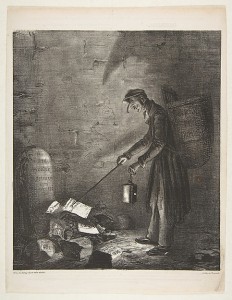
The role of cognitive bias and social effects in information seeking and knowledge construction is not a new topic in educational psychology. Charles West, my adviser for my master’s degree in educational psychology, published The Social and Psychological Distortion of Information in 1981. His co-authored text Instructional Design: Implications from Cognitive Science (1991) has been a touchstone for me since I first encountered it in an instructional design course taught by his co-author James Farmer in 1994.
Careful consideration to constructing the learning environment and not only focusing on teacher performance has been a mantra for my instructional design practice since then. I have found a more contemporary exploration of this theme in Understanding by Design (2005) by Grant Wiggins and Jay McTighe as well (which is the one book I would choose if I could only suggest one text on instructional design to anyone who is involved with teaching or training design and delivery). The instructional design challenge is one of motivation and engagement rather than solely knowledge transfer and skill development.
I have continued to incorporate these topics in various presentations (e.g., An Information Literate Life: Individual Experience and the Role of Libraries and Librarians, which also explored the concept of information privilege and the “information literate conscientious objector”).
More recently Bryan Alexander invited me to contribute an essay to an upcoming strategic issue brief that will be published by the New Media Consortium as part of the its digital literacy research initiative. My essay is titled “Self-Directed Digital Literacy Learning: Eliciting Learner Commitment” and I’m pleased to be able to provide a sneak peak of the opening paragraphs here:
“So many of the pieces one reads about digital literacy (or any of its companion literacies – information, media, computer, technology, etc.) present the learner as illiterate – in need of developing knowledge, skills, and abilities that the learner does not have and who will not gain unless they receive explicit instruction. In contrast, there is also the literature that puts forth the concept of the “digital native” who is born into intuitive knowing, doing, etc., by virtue of the technological milieu into which they were, quite literally, born and who are thus in need of no instruction.
This later notion is rather thoroughly critiqued by others so I will not make it my focus here. As to the former, of course it is no doubt the case that there are knowledge, skills, and abilities that learners do not have and that they could benefit from instruction (though I would still caution against the sine qua non perspective about formal instruction). But what of another possibility – one that I have observed repeatedly throughout my career – that of the learner who has the knowledge, skills, and abilities but does not use them? What of aliteracy?”
I am convinced that addressing aliteracy is the challenge we face in teaching for the goal of Information Literacy as a Way of Life. Recent months of discussion about “fake news” and the important of critical thinking have only strengthened my belief.
I’ll be discussing these issues, including curiosity as a key digital and information literacy disposition, as a member of the keynote panel for the “Library 2.017: Digital Literacy & Fake News” online conference on June 1, 2017. The online conference is free (register here).
Edited to add this link to the Powerpoint slides for my keynote.